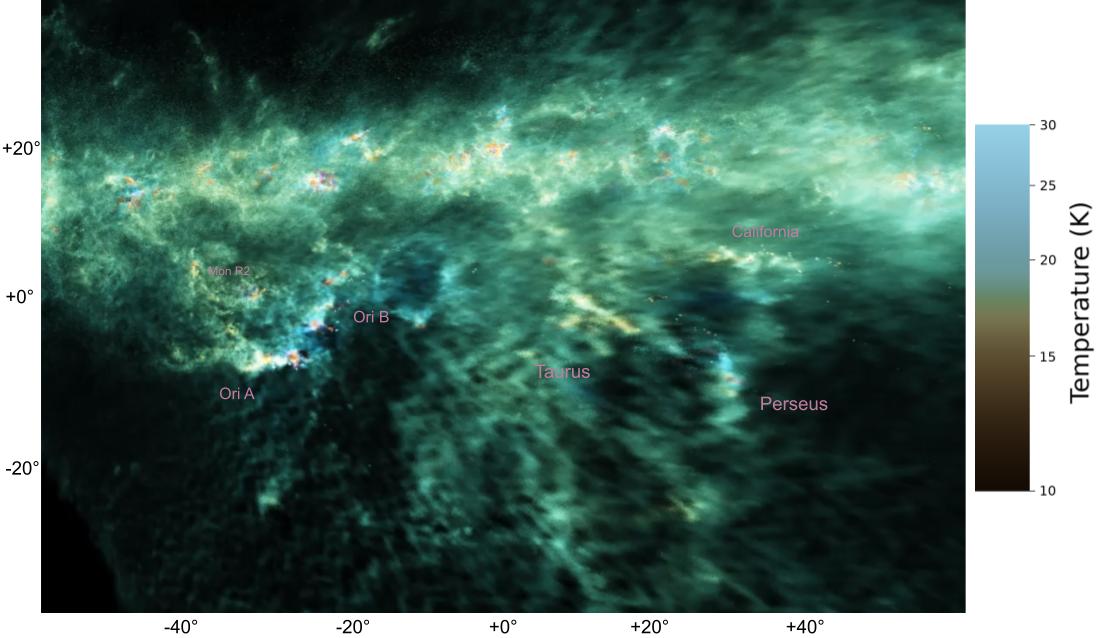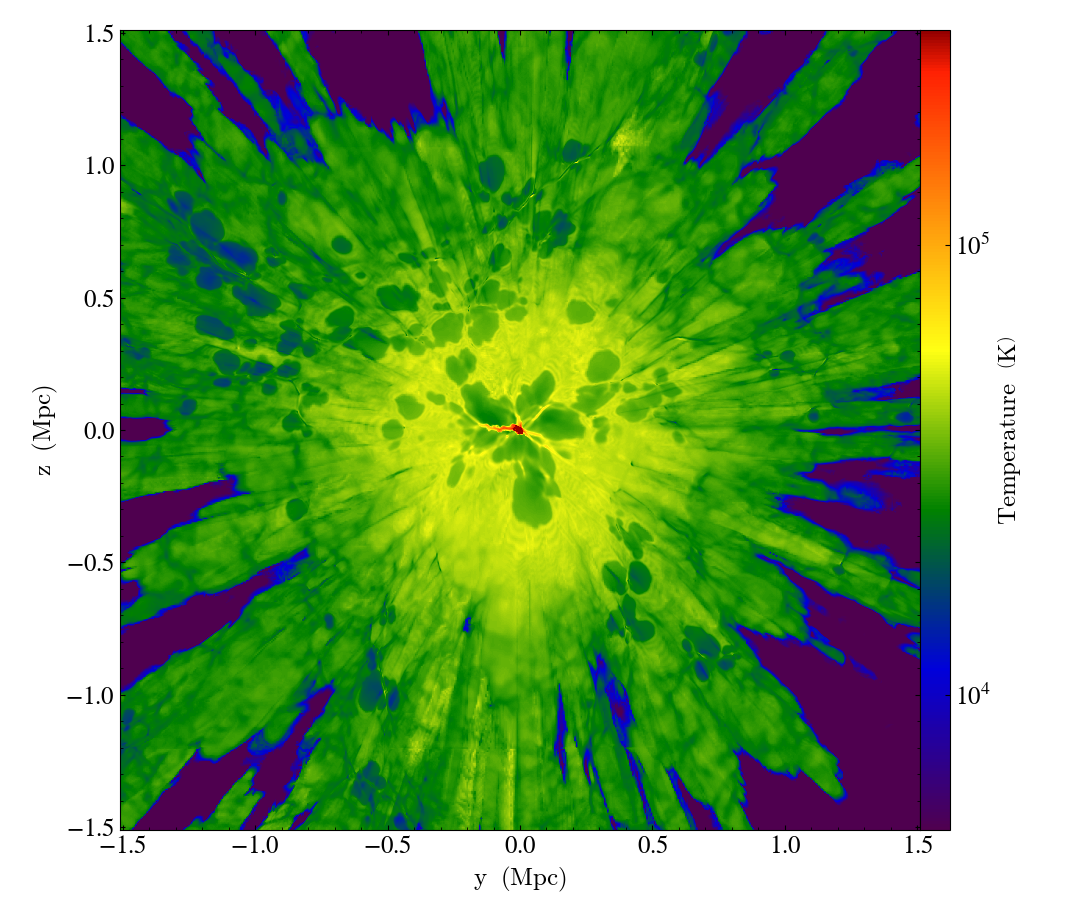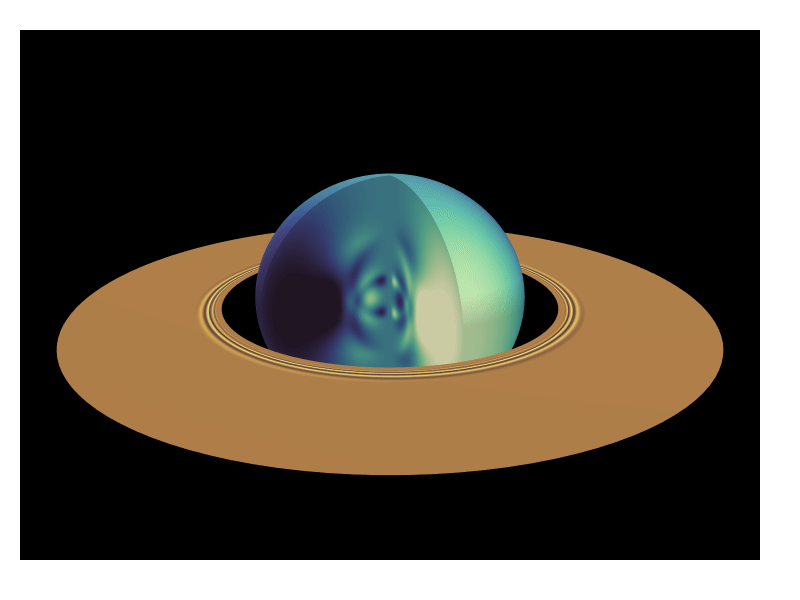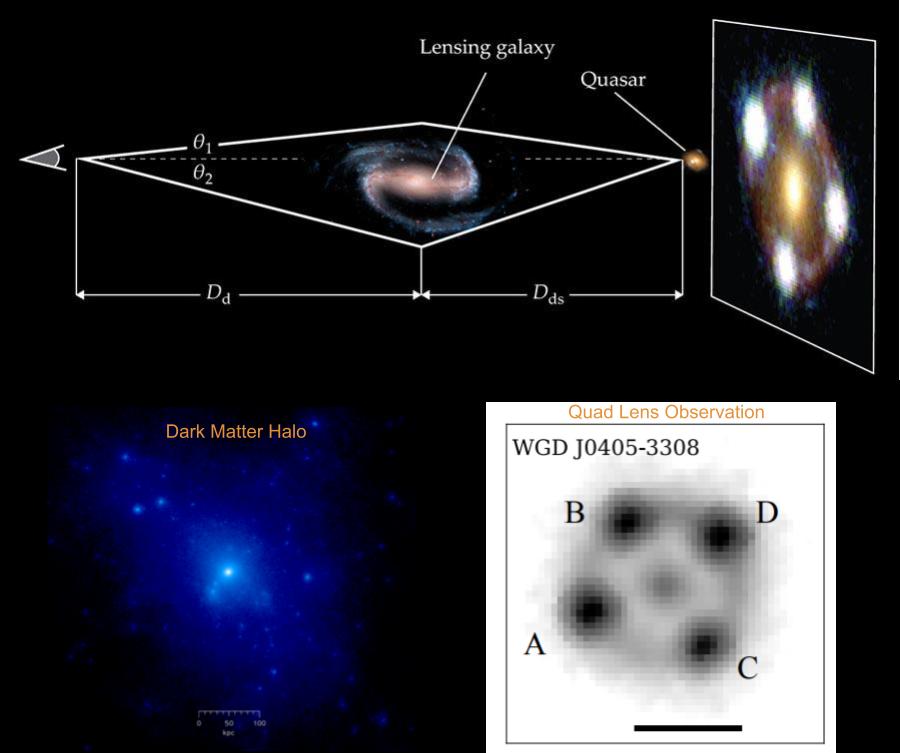2023 Possible Summer Research Projects
Title: Exploring the Polarisation of Astrophysical Systems
Supervisor: Jennifer Chan
Many astrophysical sources emit polarised radiation. Examples are stars, galaxies, and galaxy clusters, among others. The polarised view of these objects offers crucial information about the sources themselves and the part of the Universe traversed by the polarised emission. Interestingly, polarisation patterns seen on the sky sometimes exhibit coherent structures and sometimes appear to be simply random. Variability of polarization in time has also been observed in some radio point sources, such as Fast Radio Bursts (FRBs). Understanding the origins of various observed polarisation properties of astrophysical systems requires an understanding of how radiation propagates and is modified through interaction with matter. In this project, the student will learn about polarised radiative transfer and apply this to understand the polarisation of an astrophysical system on sub-galactic, galactic or even larger scales. It has a computational component that the student will gain hands-on coding experience to solve real-time research problem. The student will also be embedded in research group settings where they will have opportunities to develop science communication skills and be exposed to many research frontiers.
_______________________________________________________________________________________________________________
Title: How the Intergalactic Medium (IGM) Responds to Flickering Quasars
Supervisor: Huanqing Chen
A quasar is an ultra-luminous galactic nucleus in the center of a distant galaxy. Quasar’s radiation is from the released gravitational energy of accreted material to the quasar’s central engine– a supermassive black hole. The radiation is expected to change over time, yet the variability is not well-understood.
One way to constrain the quasar variability is by observing the IGM around the quasars. When the quasar becomes bright, it reduces the neutral fraction of the gas around them. The neutral fraction of the gas can be observed by the absorption spectra of the quasars, thus helping us understand quasar variability.
In this project, students will use a radiative transfer code to process IGM from a state-of-the-art cosmological simulation and explore how the IGM neutral fraction and temperature change with a flickering quasar. Through this project, the students will develop a deep understanding of radiative transfer, cosmic large-scale structure, and the connection between phenomena at different scales.
_______________________________________________________________________________________________________________
Title: Multiple lines of enquiry at high redshift: simulating line-intensity mapping analyses
Supervisors: Dongwoo Chung
Line-intensity mapping (LIM) surveys in the next decade will produce observations of fluctuations in integrated line intensity across large cosmological volumes, targeting various radio and sub-millimetre lines that all trace matter and galaxies in different ways. Maximising the science value of LIM surveys will require leveraging certain analysis techniques, like cross-correlations between (or even within) surveys that will allow inference of more information with more confidence compared to analysing only auto-correlations for each target line. However, forecasting such analyses requires self-consistent, physically motivated line-emission models that can be applied to large cosmological simulations. The project will build on existing simulation frameworks to simulate LIM signals and observations, with an eye on science goals of near- and far-future surveys. The student will gain skills related to analysis of numerical simulations, as well as understanding of high-redshift astrophysics and cosmology. Given the wide range of possibilities, details will change to match the student’s exact interests.
_______________________________________________________________________________________________________________
Title: Listening to Gas Giant Planets
Supervisor: Janosz Dewberry
Seismology—the interpretation of planetary vibrations—may be our best hope for understanding the internal structures of gas giant planets like Jupiter and Saturn. Understanding the present-day structure of the planets in our own backyard is essential to learning their formation histories, and to interpreting our observations of planets outside the solar system. For this project, the student will work with Janosz Dewberry to construct models of gaseous planets, compute their vibrational spectra, and compare with recent observations for both Jupiter and Saturn. This primarily theoretical research will involve a mix of computation, mathematical analysis, and potentially numerical simulations (depending on the student’s interest).
_______________________________________________________________________________________________________________
Title: Disentangling Astrometric Signals from Multi-Planet Systems
Supervisors: Sam Hadden
While the current exoplanet census is dominated by small transiting planets at short orbital periods, in a few years ESA’s Gaia mission will release data that is expected to contain detectable astrometric signals from tens of thousands of gas giant exoplanets on multi-year orbits. Most projections of Gaia’s expected exoplanet yield have made the simplifying assumption of detecting at most one planet per star but there will no doubt be many astrometric planets residing in multi-planet systems. When can we disentangle astrometric signals generated by multi-planet systems to reliably recover the number of planets and their orbits? What are the consequences of mistakenly modeling the astrometric signal of a multiplanet system by assuming only a single planet orbits the host star? This project will explore these questions through applications of orbital dynamics and Bayesian inference methods.
_______________________________________________________________________________________________________________
Title: Neutron Star Science with Gravitational Waves
Supervisor: Phil Landry
Neutron star mergers are rich sources of astrophysical information, telling us about the structure of ultra-dense matter, the origin of the universe’s heavy elements, and the engine for short gamma-ray bursts. To interpret the gravitational waves emitted by these mergers, we rely on theoretical models for neutron stars. By comparing these models’ predictions to gravitational-wave data, we can refine our understanding of neutron star matter and the astrophysical processes that form compact binaries. SURF students working on a project in this area will learn about stellar structure and strong gravity, and develop skills in data analysis, Bayesian statistics and Python programming.
_______________________________________________________________________________________________________________
Title: Forecasts and Simulations for Relativistic Corrections to the Sunyaev-Zeldovich Effect
Supervisor: Zack Li
In this project, the student will develop methods to predict the observed behavior of relativistic corrections to the Sunyaev-Zeldovich effect, using the Websky simulations, to produce mock observations which are correlated with other large-scale structure tracers. The student will also develop forecasts for upcoming observations of this effect from experiments like FYST.
_______________________________________________________________________________________________________________
Title: Interpretable and Generalisable Machine Learning at Recombination using Neural ODEs
Supervisor: Zack Li
The calculation of the ionisation history of the Universe is important for the interpretation of Cosmic Microwave Background (CMB) data. Existing methods to compute the ionisation history, such as RECFAST, are already emulators for more complicated atomic physics, but they are highly tuned to the standard model of cosmology. To generalise these emulators, the student will develop a differentiable machine learning model for recombination physics using a deep learning architecture known as neural ordinary differential equations (neural ODEs).
_______________________________________________________________________________________________________________
Title: Unraveling the Radiative Properties of the Interstellar Medium
Supervisor: Ioana Zelko
A comprehensive 3D map of the properties of dust can serve as a great probe for the interstellar medium (ISM), as well as the radiation field of the galaxy, which plays a critical role in many applications, including physics of the galactic magnetic fields, polarization measurements, modeling of the diffuse Galactic gamma-ray emission, and star formation.
Previous work1 has combined existing 3D maps of the reddening (-> density) of the dust in the ISM, with emission observed by Planck and IRAS at five frequency bands, to create a 3D temperature map2 of the interstellar dust temperature, at resolutions of 27’ (see figure below).
In this project, the student can build on the 3D dust temperature map to explore potential applications: models of galactic magnetic field, polarization maps, correlations with star forming regions with other data catalogs (ex: star datasets like Gaia), as well as other ideas. Resolution matching will likely play a role in determining the feasibility of the application.
The student will gain knowledge of theory, data analysis, statistics and programming, with the possibility of practicing oral, visual, and written science communication and publication. Project details can change to match the student’s skills and interests.
1. https://arxiv.org/pdf/2211.07667.pdf
2. https://www.youtube.com/playlist?list=PLijDPBNhGIqQccgN0BKJciE16NJ1PtsdO

_______________________________________________________________________________________________________________
Title: Using Gravity’s Effect on Light to Study the Universe
Supervisor: Ioana Zelko
Humanity does not know what the majority of the universe is made of. Planets, stars, galaxies, and all the elements in the periodic table of chemistry, make up less than 5% of the universe. Two hitherto unknown components called dark matter and dark energy are believed to make up the rest. It is important to develop astrophysical probes which can constrain or lead to a discovery of candidates for these components. One such probe is state-of-the-art measurements of strong gravitationally lensed quasars. Dark matter doesn’t interact with light, so we can’t take a picture of it and observe it directly. However, it has mass, and thus exerts a gravitational pull on other matter and even light. When light from a bright object passes near a galaxy that contains dark matter, the dark matter acts as a lens and multiple images of the bright object can form. The position and brightness of the multiple images tell us about the underlying matter that is doing the lensing. This technique has been used to constrain dark matter candidates which do not have sufficient nongravitational interactions to be probed in laboratory or accelerator experiments1. In this project, the student can build on existing work and expand the application of these techniques further in the field.
The student will gain mastery of physics concepts as applied throughout cosmology and gravitational strong lensing, as well as programming and data analysis skills, with the possibility of practicing oral, visual, and written science communication and publication.
1. https://journals.aps.org/prl/abstract/10.1103/PhysRevLett.129.191301


